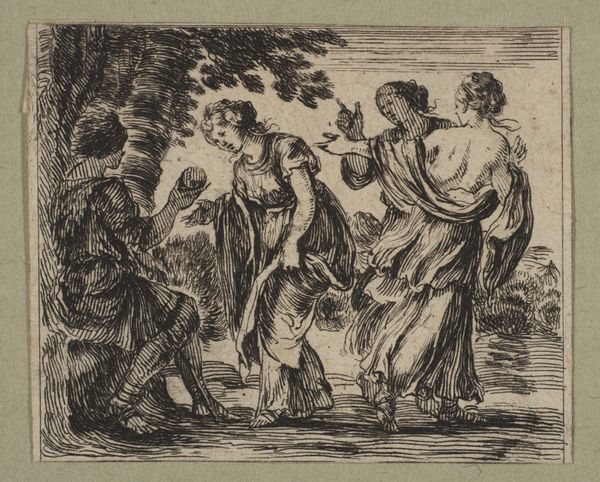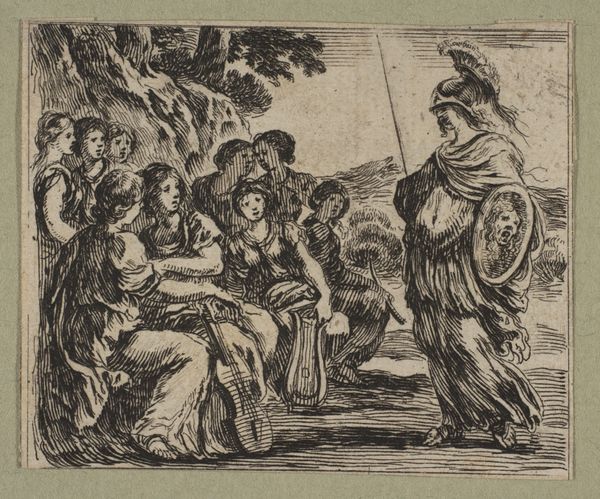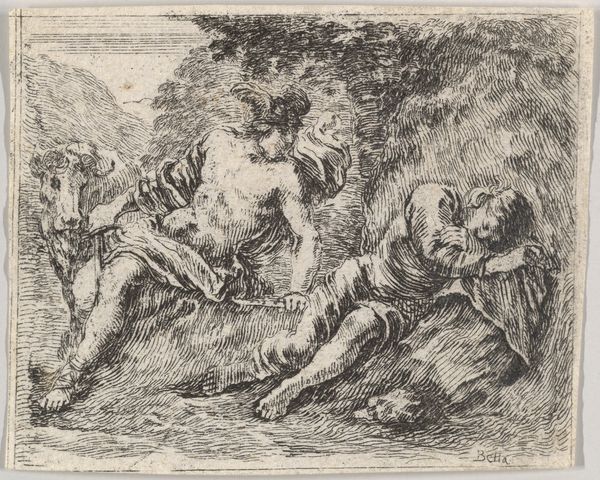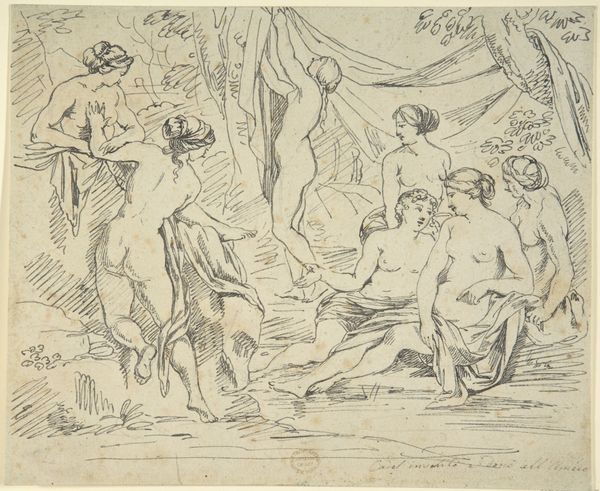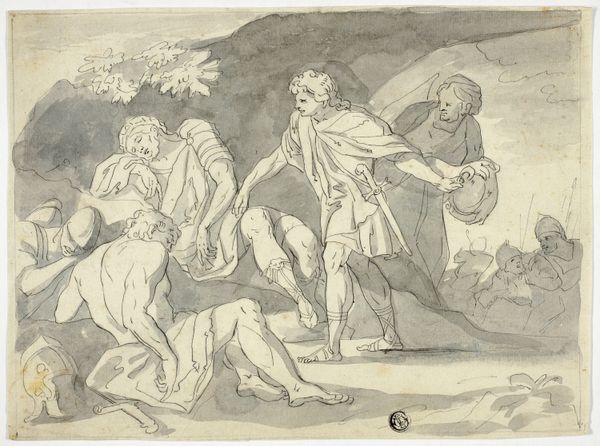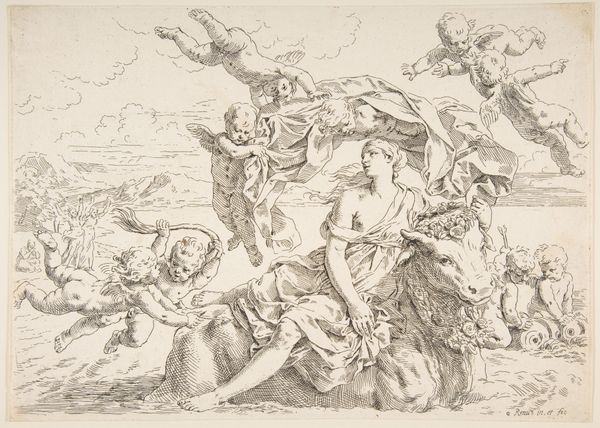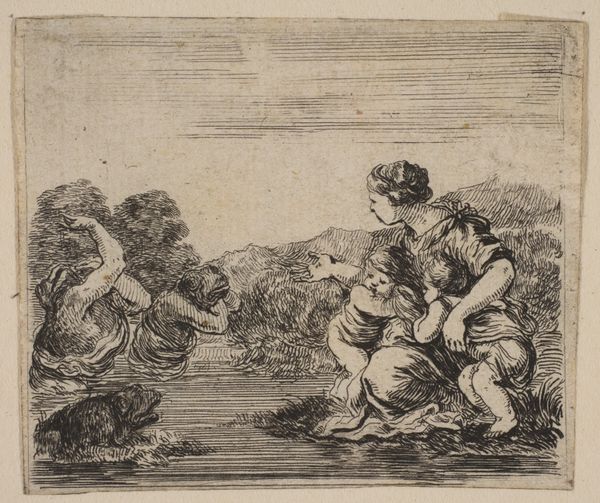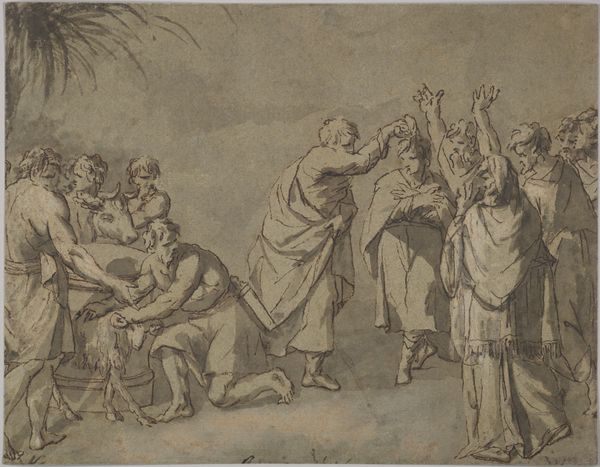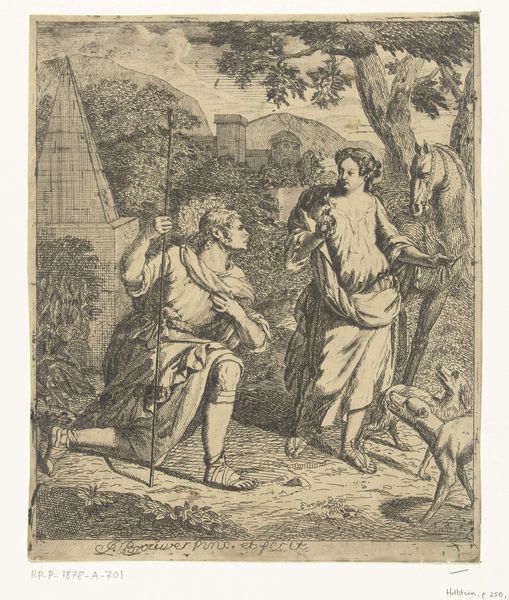
print, etching
#
baroque
# print
#
etching
#
classical-realism
#
etching
#
figuration
#
history-painting
Dimensions: 1 13/16 x 2 1/8 in. (4.6 x 5.4 cm) (sheet)
Copyright: Public Domain
Editor: Here we have Stefano della Bella's etching, "Judgement de Paris," from the 17th century. The detail is really striking, especially considering it's a print. It’s hard to get a sense of drama though, everyone seems rather subdued. How do you interpret this work? Curator: It's fascinating how the socio-political context impacts even seemingly straightforward mythological scenes. Consider the role of prints like this one. How might its reproduction and circulation affected its meaning in 17th century Europe? It brings up the theme of beauty contests. Editor: Yes, this composition represents the beauty contest with Paris being asked to choose the most beautiful goddess – Venus, Juno, or Minerva. This feels so ancient, doesn’t it? Curator: Indeed, but its circulation as a print positions it within the political sphere of art during that time. Who gets to decide “beauty," and what does that decision mean? Perhaps it acts as a subtle commentary on the powerful patrons and institutions of the day? It reflects the politics of image-making. Think of who this imagery might appeal to. Is it intended to be controversial? Editor: I hadn't considered how much power rests in the hands of the person making the judgement – Paris, or maybe, more symbolically, the patrons who commissioned works like this. And also to be beautiful for whom, like for men during that time period? It seems subversive! Curator: Exactly! Della Bella, through this classical subject matter, could subtly critique contemporary power structures. And the fact that it is an etching emphasizes its potential for wider distribution, further amplifying the political implications of the scene. Considering its display within the Minneapolis Institute of Art adds another layer. How does that change its meaning again? Editor: Wow, I’ll never look at a seemingly simple mythological scene the same way again! Thank you, the history of institutions, especially museums that house these works, can play a crucial role in forming political imagery! Curator: It highlights that understanding art requires exploring its cultural and historical trajectories, from its creation to its present-day exhibition.
Comments
No comments
Be the first to comment and join the conversation on the ultimate creative platform.
